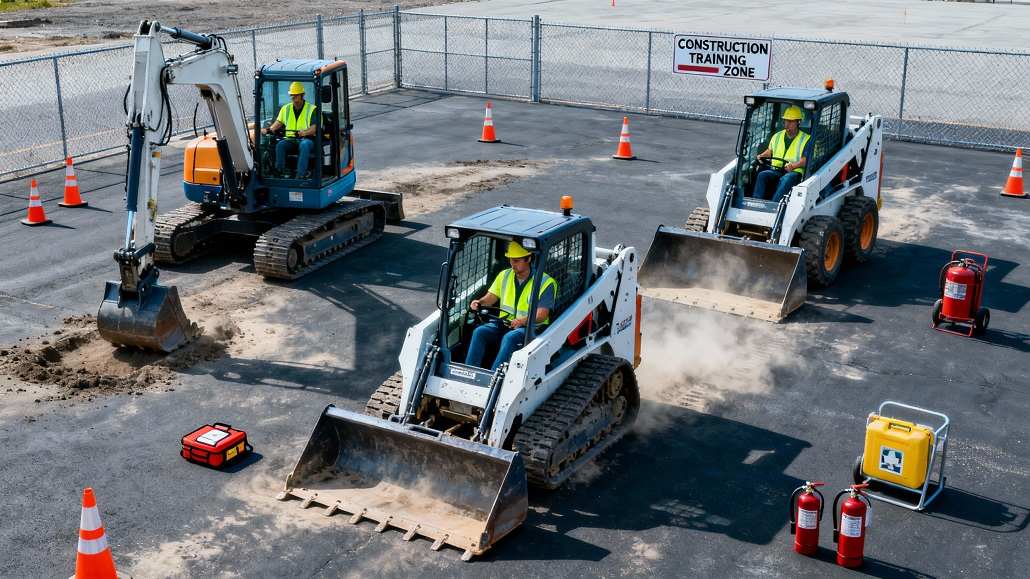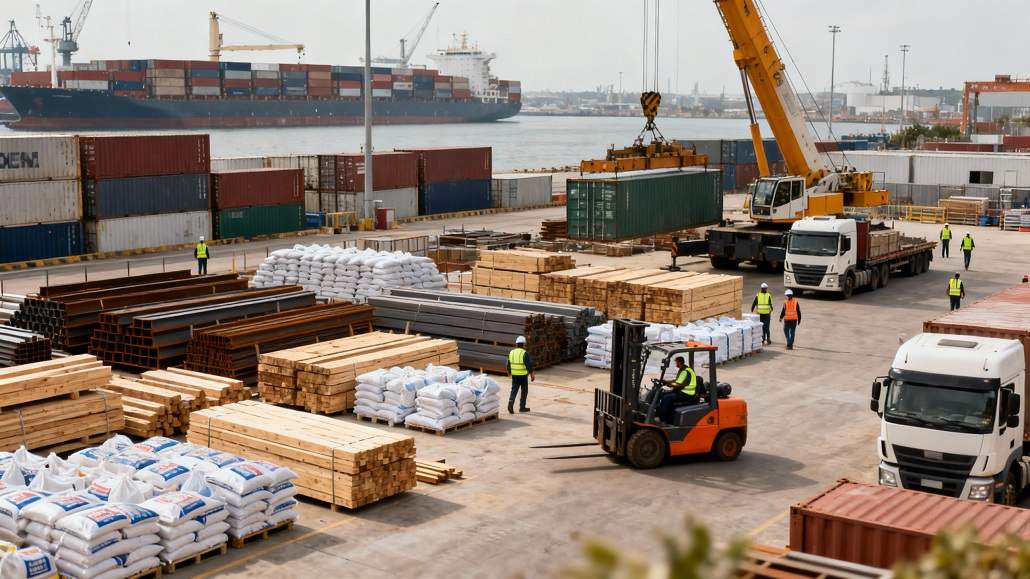2025 Construction Executive Outlook: Terry Dolan, VP Case Construction Equipment
Dolan shares trends shaping Case CE's strategy in 2025, new technologies hitting the market and its greatest opportunities and...

Editor’s Note: This is one of four Q&As with top executives from construction equipment manufacturing companies. To read perspectives from Brady Seavert, Bobcat VP of Construction Sales, click here. For Scott Young, Head of North America, Volvo CE, click here. For Al Quinn, CEO of Hitachi Construction Machinery, click here.
OEMs saw mixed growth in 2024 as the economy continues to recover from a period of stubborn inflation, high interest rates and global conflicts.
But ask some of the top construction equipment executives about their forecast for 2025 and the outlook gets a little rosier.
For this series of Q&As, Equipment World tapped a handful of construction industry leaders to find out what trends are shaping their strategy in 2025, how they plan to invest in their manufacturing and dealer operations and where the greatest opportunities and roadblocks lie.
Our slate of experts also touched on technology – from telematics to AI – and the next steps in their alternative power transformation.
Keep reading to see where our final expert, Terry Dolan, VP of North America at Case Construction Equipment, is placing his bets in 2025:
Equipment World: Looking back on 2024, what is your biggest learning or a-ha moment?
Case Construction Equipment accomplished a ton in 2024. We entered new markets and debuted in new product categories with seven new machines, the TL 100 mini track loader and six small articulated loader models, as well as our new electric line.
For example, we launched the new 580EV, the first electric backhoe loader. This machine was designed and purpose-built as an EV at the request of our customers and their needs. We have been overwhelmed with the interest and enthusiasm that the industry and our customers have for this product. This is a great example of Case technology leading the way for this category and for EV as a whole.
[Watch: Test Run & Review: The World’s First Electric Backhoe, Case’s 580EV]
We gained a much deeper understanding of the contractors and other industry professionals in these spaces. By learning about their needs and how to best connect with them, we continue to find new and unique ways to serve these end users to help them do more work, easier and more profitably.
We also recognized that many of these professionals may be buying equipment like this for the first time. We have been working with our CNH Capital group to simplify the process for them and make it easier for new businesses to gain approval.
EW: What trends are shaping your strategy in 2025?
There are several marketplace trends shaping the Case strategy in 2025. First, industry professionals are seeking greater control of what’s going on with their equipment and how they use it. To meet this demand, we’re seeing machine control technology continue to expand and evolve. Machine control can make operators more productive, more efficient and more precise. These advanced capabilities also make it possible for companies to bring on less experienced operators and get them up to speed faster.
At the same time, contractors, foremen, fleet managers and operators want immediate access to the information they need, any time that they need it. Every second on the jobsite counts, and no one wants to make a phone call, leave a message and wait for a callback. As a result, we are seeing a more digitally connected marketplace. At Case, for instance, we use our digital solutions to provide industry professionals with hip pocket support, and we’re focused on building an even stronger digital community this year. We’re making sure that our customers have all the information specific to their business and their equipment at their fingertips so they can maximize their productivity and success.
EW: What do you see as the biggest construction market opportunity in 2025?
The Infrastructure bill continues to drive the biggest construction market opportunities — specifically for the construction of roads, bridges and residential development. To help the industry capitalize on these opportunities, Case continues to develop new technology for products that can meet that niche, such as maintenance-free emissions solutions and linkage improvements.
We’re also leading the way to bring in proven, compact equipment from other regions that may not have been utilized before in the North American market but now give contractors here more flexibility to work in tighter spaces to win these jobs, like side shift backhoes and mini excavators. Contractors are finding that side shift backhoes make them more productive and efficient on urban and roadside jobs.
Further, we’re seeing growing popularity for small articulated loaders (SAL). Especially for landscaping contractors, agriculture and anyone working in tight areas and confined jobsites, SALs have great potential to aid productivity.
EW: What will be the greatest challenge?
I think one of the biggest challenges that the industry is facing right now continues to be inventory. As the industry came out of COVID, inventory levels were really low, and manufacturers were working to fill dealer pipelines with machines. What we’ve seen through the second half of 2023 to 2024 is that production continued to increase and inventory at the dealer’s point of sale continued to grow. Now, we’re at a point where the challenge is to optimize inventory, so that dealers have the right products to satisfy customer demand.
What’s unique about the construction industry is that the buying cycle is often determined by the jobs that contractors win and the direction in which they want to grow. Contractors will typically purchase new equipment because of the type of new work they’re going after, so as contractors evolve their fleet, it’s essential we get the right equipment in the field when they need it.
EW: What issues are your dealers facing and how will you help them address those problems in 2025?
Case, dealers and trade schools have a great opportunity to build the technicians of tomorrow. Dealers have a need to expand their team of technicians, and the industry understands the challenge to add new, great jobs for this need. Case is working more closely with the dealer network and trade schools to cultivate a talent pipeline for our dealers and is also developing more educational opportunities for their apprenticeship programs. A number of Case dealers have created their own apprenticeship programs to recruit and educate potential technicians, and Case works closely with these dealers as these programs develop.
Additionally, as Case introduces new technologies and capabilities, such as machine control and electric vehicles, we want to help our dealers educate industry professionals about how to use them to maximize their value. We’re planning more educational events with Case dealers for industry professionals to learn about new technologies so they can make informed decisions that benefit their business. Whether they want to be more productive or more efficient or to operate more safely, we want to give them the education needed to meet their goals.
EW: Will you make investments in your manufacturing and distribution networks next year? If so, what will they be?
Case makes significant capitalized investments in its manufacturing facilities every year that align with the direction we see the industry moving. For instance, in 2021 our parent company, CNH Industrial, acquired Sampierana S.P.A., which manufactures mini excavators. To fulfill industry needs for more compact equipment, we have made significant investments in manufacturing to increase production capability. This included retooling facilities, resetting manufacturing workflows and adding a secondary plant. As a result, we’ve expanded the capacity to produce more equipment like mini track loaders and electric mini excavators and dramatically increase the global availability of compact equipment.
In 2025, CASE will continue to make investments in its manufacturing to help meet industry demand and right-size inventories.
EW: What technology do you see as having the most potential in the near-term?
Attachments continue to expand the utilization and maximize the performance of machine investments. For example, I spoke to a demolition contractor who runs Case excavators in his fleet and he uses up to 20 different attachments in a day, on a single unit. To get the most value and return on their capital investments, it’s critical for contractors to understand all the different attachments that are available to make them more productive. And as jobsite challenges continue to evolve, there will be new attachments manufactured to help solve those problems.
EW: What’s the next step in your alternative power plans? What kind of demand are you hearing from end users on electric, hydrogen or other alternatively fueled equipment?
The biggest industry demand for alternative power continues to be for electric equipment. Case enhanced its EV lineup in 2024 with the introduction of the 580EV, the industry’s first electric backhoe loader, complementing our other electric compact equipment, including the CX15EV mini excavator and the SL22EV small articulated loader. And we expect the commercial launch early in the coming months for our new electric mini excavator and compact wheel loader.
EVs and their many benefits are disrupting traditional buying cycles right now. Contractors who would typically not be buying machines at this time are making these purchases and using these machines to gain new opportunities and grow their companies’ offering. Because they are quieter and produce no exhaust, they can open the door to new applications and jobs with noise abatement and environmental restrictions.
At Case, we will continue to evaluate and look for new alternative fuels that can provide valuable opportunities like this for industry professionals.

 machineryasia
machineryasia 







